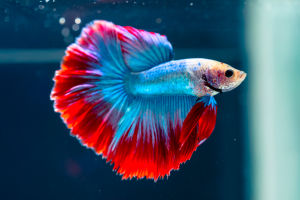Have you ever wondered why watering plants properly is so important? We all know plants need water, but what exactly makes it so vital?
Today, let’s explore why water is absolutely essential for plant growth and how understanding this can help us grow healthier, greener plants. Stick with us, and you’ll never look at watering the same way again!
Water: The Lifeline That Keeps Plants Alive
Water acts like the lifeblood for plants. It’s involved in almost every process inside the plant. From the roots absorbing water in the soil to the leaves releasing moisture into the air, water keeps the plant’s cells full and firm. Without enough water, cells shrink, leaves wilt, and stems get weak. Essentially, water helps plants stay upright and lively.
How Plants Absorb and Use Water?
Plants mainly take in water through their roots, which reach into the soil to soak up moisture. But they can also absorb tiny amounts through their leaves from the humidity in the air. Once inside, water moves through the plant in specialized channels, carrying nutrients from the soil up to the leaves. These nutrients are what plants need to grow new leaves, flowers, and fruits. Plus, water cools the plant during hot days by evaporating from the leaves, kind of like sweating in humans.
Water Supports Photosynthesis, the Plant’s Food Factory
Photosynthesis is the process where plants convert sunlight into energy, and guess what? Water is a key player here. During photosynthesis, plants split water molecules to release oxygen and produce glucose, the sugar they use for energy. Without enough water, photosynthesis slows down, which means less food for the plant, stunted growth, and less vibrant leaves.
The Balance Is Key: Not Too Much, Not Too Little
While water is crucial, too much can be just as harmful as too little. Overwatering can drown roots, causing them to rot and lose their ability to take in oxygen and nutrients. On the flip side, underwatering leaves plants thirsty, causing droopy leaves and slow growth. Finding the right watering balance means paying attention to the plant type, soil condition, and climate. A good tip is to check the soil moisture before watering: if the top inch feels dry, it’s usually time to water.
Tips for Efficient and Healthy Watering
To give plants the best care, watering deeply but less frequently encourages roots to grow strong and go deeper into the soil. This helps plants survive dry spells better. Watering early in the morning or late in the afternoon reduces evaporation and lets plants absorb more water. Also, avoid watering leaves directly to prevent fungal diseases; instead, aim for the soil near the roots.
Water Is the Foundation of Plant Growth
When we understand how water supports plants — from nourishing cells to enabling photosynthesis — it becomes clear why it’s an indispensable condition for their growth. Paying close attention to watering habits helps us create a thriving environment for our plants. By giving them just the right amount of water at the right time, we can watch them flourish like never before.
Thanks for joining us on this journey to uncover the power of water in plant growth! What’s your biggest watering challenge? Share with us — we’re here to help all Lykkers grow their green spaces beautifully.

